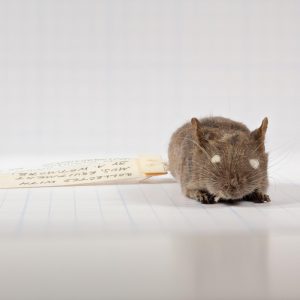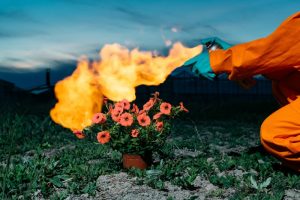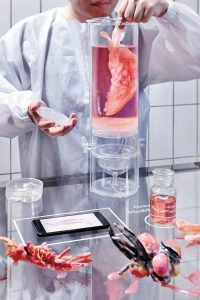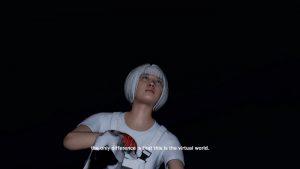An increasing number of projects claim that they will “bring back”, de-extinct, revive or resurrect long lost animal and plant species. Or at least close versions of them.
This scientific movement has an arsenal of tools such as cloning, gene-editing technology or back breeding at their disposal in order to bring to life approximations of the woolly mammoth, the American chestnut tree or -my very favourite- the Gastric-brooding frog, the only-known frog that used to give birth through its mouth.
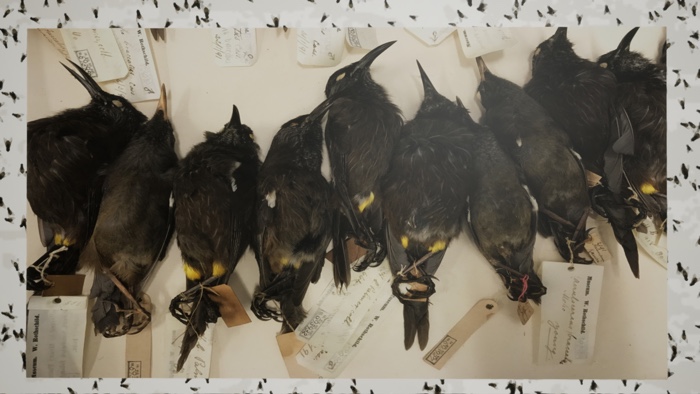
Jakob Kudsk Steensen, Re-Animated, 2019
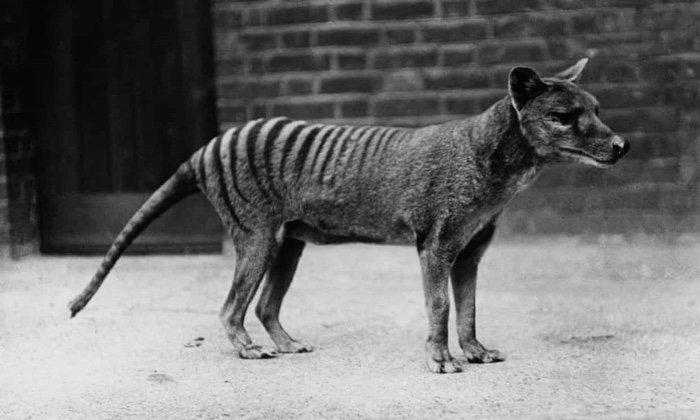
Photograph: Popperfoto/Getty Images, via The Guardian
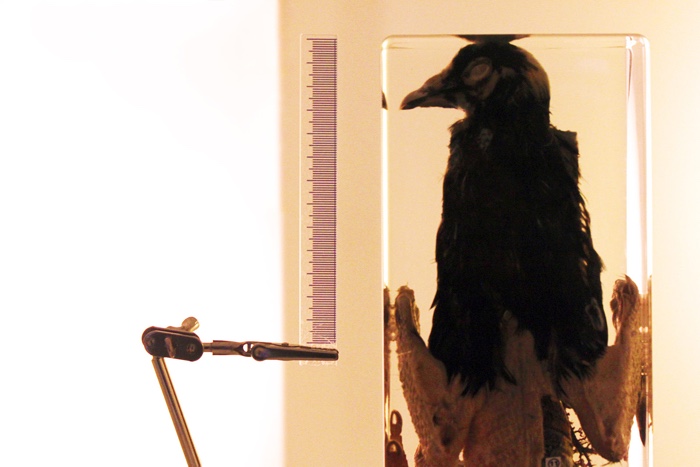
Tina Gorjanc, Phylogenetic Atelier, 2018
Artists and designers are also recreating long-lost species, lost landscapes and even lost ecosystems. Their instruments of choice are synthetic biology, digital technologies, sound, smell and the power of imagination. While exploring the “de-extinction” movement, artists and designers are also questioning its motives, highlighting its shortcomings and challenging the promise that we can resurrect the animals and plants that we have driven to extinction.
A few weeks ago, the KIBLIX festival of art, science and technology in Maribor, Slovenia, asked me to curate a panel related to this year’s festival theme: the critical evaluation of the intersections and disconnections between the virtual and the physical. The invitation was an opportunity for me to bring around a virtual table a number of creative minds who have long questioned technology’s ability to replicate the organic, the physical, the biological.
Meet artists Tanja Vujinović and Jakob Kudsk Steensen, synthetic biologist and science writer Christina Agapakis, designer Tina Gorjanc and sound artist Sally Ann McIntyre:
The video of the session is on youtube but I wrote down some notes from the artists’ presentations so that you have all the links to the artworks and ideas shared that evening.
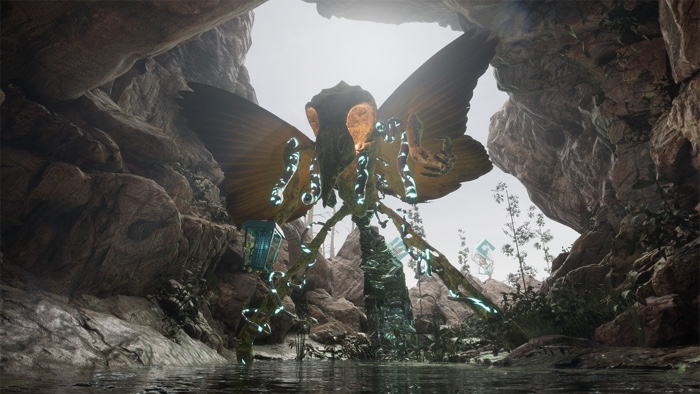
Jakob Kudsk Steensen, RE-ANIMATED, 2019
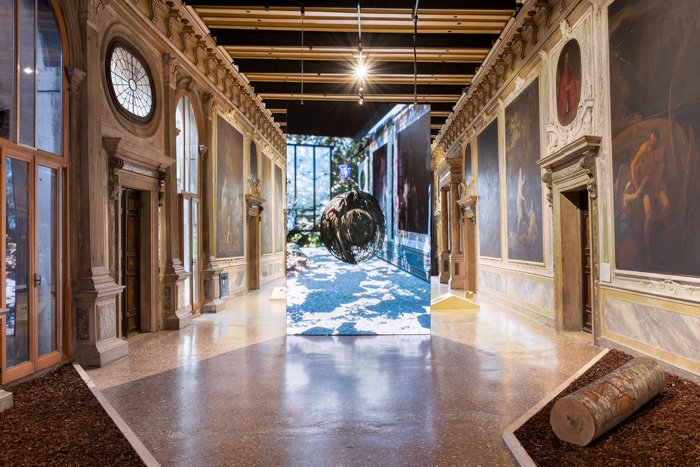
Jakob Kudsk Steensen, RE-ANIMATED, 2019 Venice Biennale, Future Generation Art Prize
Jakob Kudsk Steensen, Re-Animated, 2019
A few years ago, artist Jakob Kudsk Steensen came across the recording of a Kaua’i ‘ō’ō bird. It was a mating call but there no other Kaua’i ‘ō’ō bird on Earth to hear it. The species became extinct in 1987. Decades later, hundreds of thousands of people would listen to the recording on YouTube.
Kudsk Steensen’s VR work RE-ANIMATED is set in 1826 when the bird population and the insular ecosystem were still intact. That year, a ship carrying horses to Mexico stopped in Kauai and introduced malaria-carrying mosquitoes into the Hawaiian island ecosystem. Mosquitoes, along with habitat destruction as well as other species introduced by Western colonisers, soon wiped out the Kaua’i ‘ō’ō population from the island.
RE-ANIMATED revives the extinct bird and its song, within a distorted digital reconstruction of its original habitat.
The installation is the result of extensive fieldwork that started at the American Museum of Natural History where Kudsk Steensen photographed preserved Kaua’i ʻōʻō birds collected in the late 1800s. He also used the museum’s massive archive of plants and tree species from the island, satellite images and field trips to the island of Kaua’i as a basis to recreate the island. Images of real animals and plants were programmed to colonise the virtual island and create a unique ecosystem. The virtual landscape also incorporates computer simulation models used by climate researchers to predict future scenarios for life on Earth.
Seen from afar, the environment looks realistic but as you enter the landscape the environment becomes stranger and stranger, it becomes more an artwork rather than a representation of what was lost. You never really see a full 3D model of the bird either, you only see photographs or it or fragments of it. The approach mirrors conversationists’ belief that it is impossible to bring anything back to life exactly as it used to be. The wholly mammoth is a case in point. Any mammoth we would shape out of an Asian elephant (its closest living relative) would look like a mammoth but it would have different social behaviour, it would eat differently, etc. This is why Kudsk Steensen never brings back the bird in a literal sense. His work however brings memories and sensations that make evident the human impact on the environment and meditate on techno-scientific innovations that allow men to control nature at the same time as they generate new processes that men can’t control.
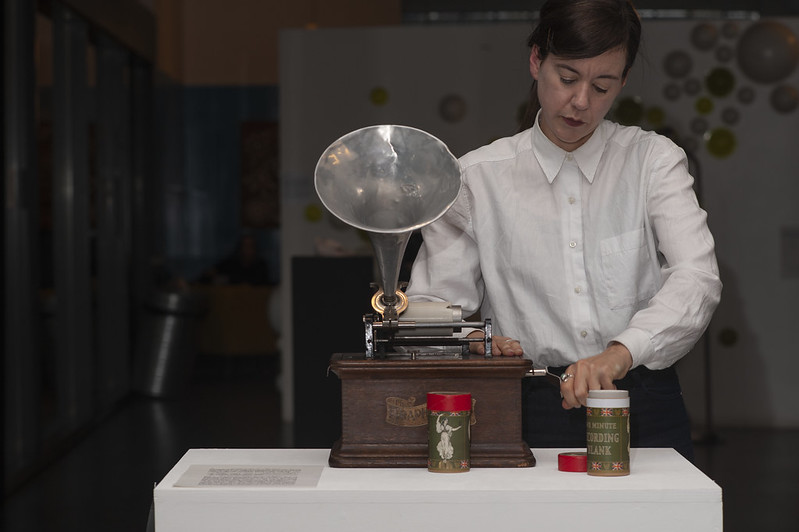
Sally Ann McIntyre, Collected Huia Notations (like shells on the shore when the sea of living memory has receded), 2015. Image courtesy of the Share festival
Sally Ann McIntyre is a sound artist, poet, writer and experimental radio maker. Her sound work often explores the materiality of recorded silence, the history of birdsong transcription and the hauntology of extinction as a trace within sound archives to bring extinct birdsong back to audibility.
As a sound artist going in the field to investigate the environment, she started noticing that the living beings, and more particularly the birds, that were absent had become a palpable part of the landscape.
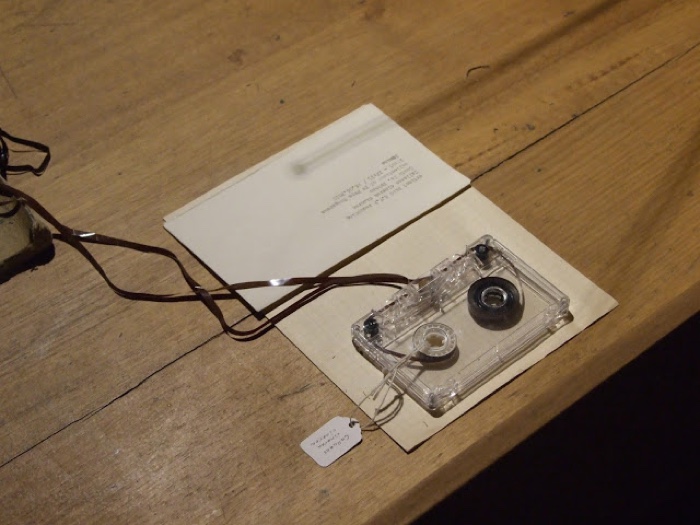
Sally Ann McIntyre, Study for a Data Deficient Species (Grey Ghost transmission), 2016
Some of her works are inspired by extinct birds such as the South Island kōkako birds. Kõkako birds were widespread in New Zealand’s ancient forests but their numbers plummeted after human settlement due to predation by introduced species. The North Island kõkako survives in low numbers. But its closest relative, the South Island kõkako was declared extinct in 2007 because it had not been seen for 60 years. It was later reclassified as “data deficient” after a possible sighting in 2013. The artist was fascinated by this idea of “data deficiency” and that in the contemporary world, we technologise species. The bird is literally at the edge of extinction, in a liminal space of the unknown. It might be extinct or living.
Sally Ann McIntyre collected the sound files of the extinct bird (the entire library lasts 1 minute and 27 seconds) and her pieces transmit the sound on very weak transmitters. Just like the bird, the sounds drop in and out of signal.
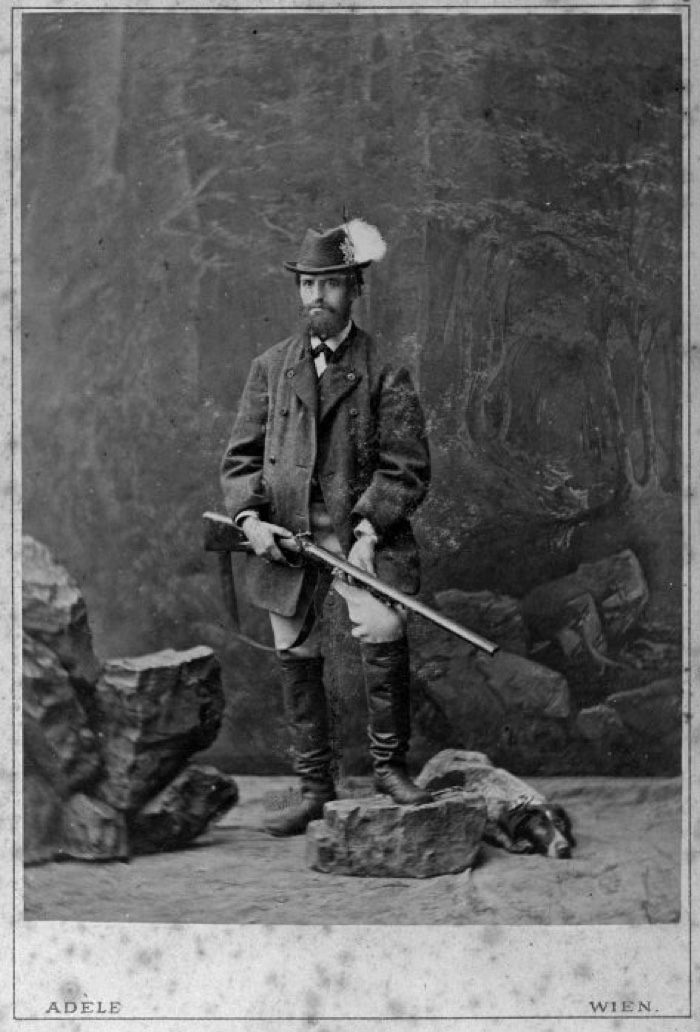
Portrait of taxidermist Andreas Reischek holding a gun. Photo by Adele (Vienna, Austria) in the 1870s, via
As part of her research into how sound and erasure function together within the settler colonial project, McIntyre looked into the figure of Andreas Reischek, an Austrian taxidermist and amateur naturalist who spent 12 years traveling in New Zealand between 1877 and 1889. A keen hunter, he amassed a “near complete” collection of 3000 bird specimens, including many that are now extinct species. His ornithological and ethnographic collections have been housed in the Natural History Museum Vienna since the late 19th century. The artist traveled to Vienna to visit Reischek’s archives and hang out with 5 kakapo that the taxidermist had brought to the museum.
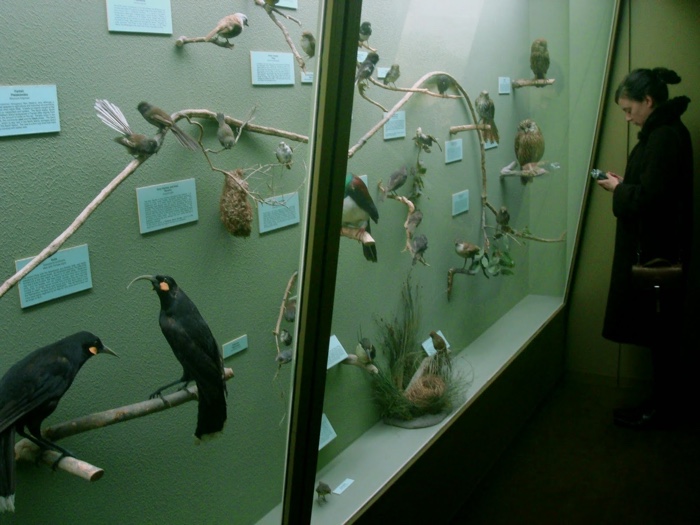
Museum of New Zealand Te Papa Tongerawa Wellington 2010, with the artist recording the silence of extinct birds in front of a vitrine of taxidermied birds. Photo
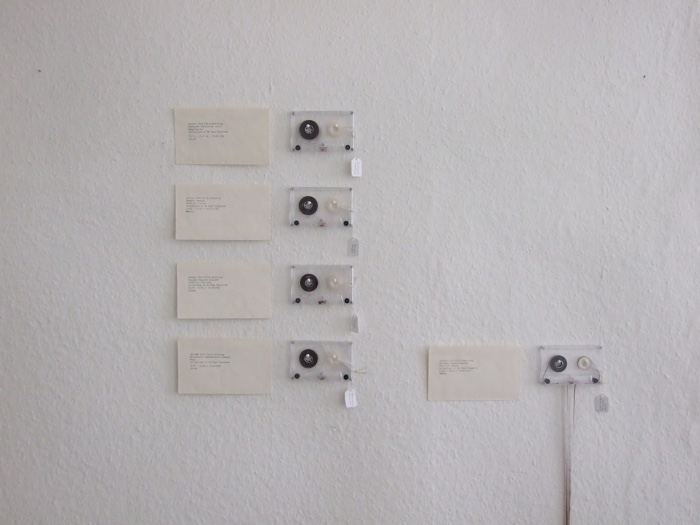
Sally Ann McIntyre, Collected Silences for Lord Rothschild # 1-4, 2010, 2012
What makes McIntyre’s work so poignant is the way it conveys the feeling of irrecoverable loss and gives individuality to extinct animal species. This personalisation contrasts with the vocabulary commonly used when talking about the 6th mass extinction, which tends to present the loss using more abstract and generalising terms.
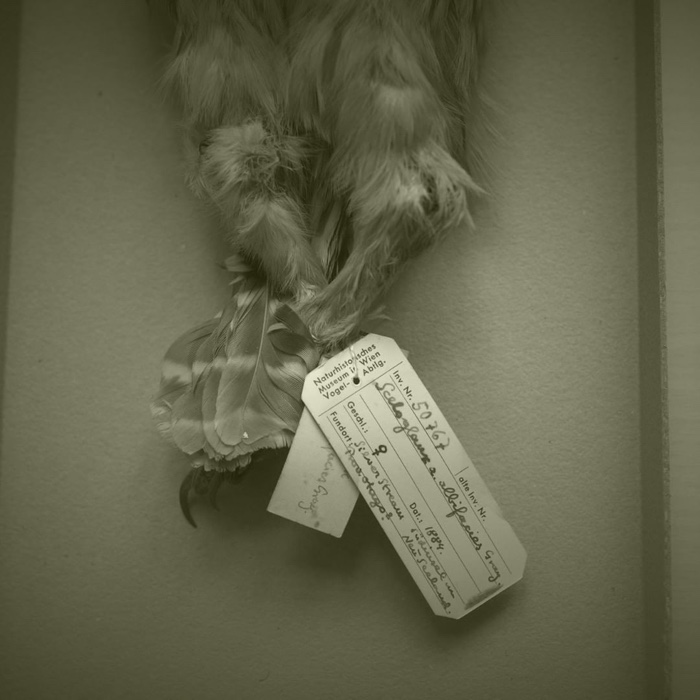
Sally Ann McIntyre, Twin signals at Silver Stream (fragments of a landscape for specimens #50.766 & #50.767), 2016-2018
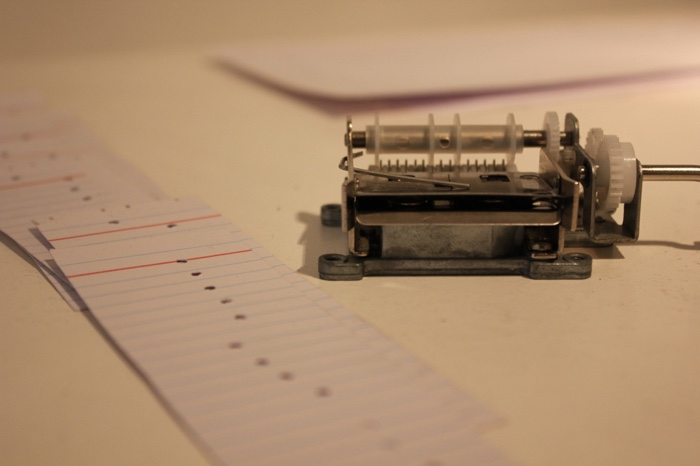
Sally Ann McIntyre, Huia Transcriptions. Photo: Katie Townsend
Sally Ann McIntyre, Collected Huia Notations (like shells on the shore when the sea of living memory has receded), 2015
The Huia is an extinct species of wattlebird from New Zealand. The arrival of European settlers led to the loss of their habitat through deforestation, the introduction of new predators and the mass killing of the birds in 1901 when their feathers sparked a fashion craze on the old continent. The last officially recorded Huia was seen in 1907.
The Huia bird became an icon of extinction in New Zealand, in part because it played an important role in Maui culture. There is no direct recording of their songs. However, in 1949, a farmer named Robert Batley asked Henare Hāmana, a local Māori who used to lure huia by imitating their call, to accompany him to Wellington and record his imitation of the bird on a disc.
McIntyre’s installation Collected Huia Notations (like shells on the shore when the sea of living memory has receded) calls forth the ghost of the lost bird.
She first asked musician Pascal Harris to play on the piano the four known Western musical notations of the song of the Huia. The sounds were then inscribed onto a phonograph wax cylinder. The artist chose the piano because it was a musical instrument found in most domestic houses in colonial New Zealand and the wax cylinders because they were the only commercially available sound recording technology available while the Huia was still alive.
However, the wax cylinders are so fragile that each playback is a small erosion of the recording, suggesting that the bird will continue to escape from our understanding with each attempt to retain the memory of its existence.
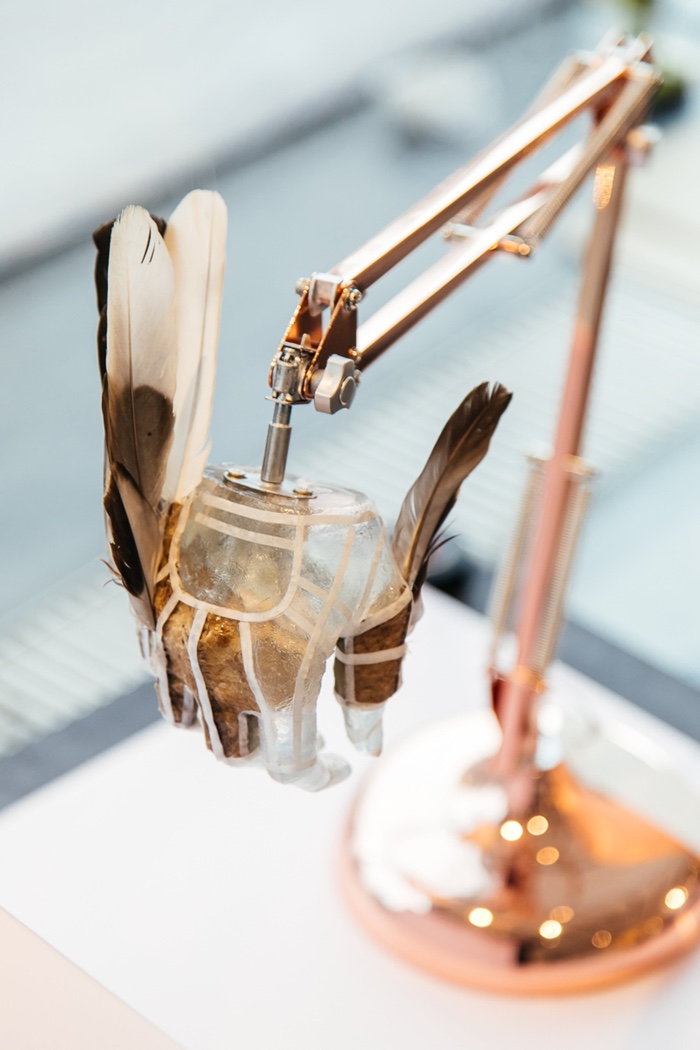
Tina Gorjanc, Phylogenetic Atelier, 2018. Exhibition view at FAKE: THE REAL DEAL? Photo credits: Science Gallery Dublin
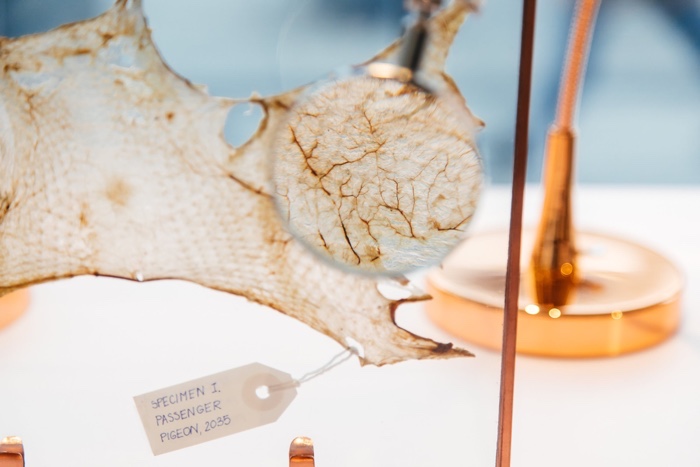
Tina Gorjanc, Phylogenetic Atelier, 2018. Exhibition view at FAKE: THE REAL DEAL? Photo credits: Science Gallery Dublin
Tina Gorjanc is a designer whose work specialises in speculative scenarios. The products she designs embody possible and alternative futures that incite us to reevaluate the beliefs and values we currently hold towards nature.
The projects the designer shared during the panel were Phylogenetic Atelier and Harvest. The former dealt with an already lost species, the latter dived into the world of legally prohibited materials that are driving a living species to extinction.
Phylogenetic Atelier looks at a society that expects scientists and engineers to regenerate the lack of biodiversity. By hoping that innovation will solve every single environmental problem that comes our way, we fail to analyse the cultural and societal implications of a “solution” that relies solely on technology.
Gorjanc’s installation stages the aftermath of a successful Revive & Restore’s Great Passenger Pigeon Comeback project. The work suggests a speculative venue that combines a museum, a laboratory and a luxury artisan workshop that in the future will craft gloves out of the leather of fake passenger pigeons. In this scenario, the “passenger pigeon” leather becomes a luxury item for the happy few who are rich enough to afford a pair, prompting the question: Is the de-extinction movement about restoring biodiversity or about producing a few curiosity specimens for the enjoyment of novelty enthusiasts?
The sample used comes from a band-tail pigeon, the subspecies used by Revive & Restore as a surrogate to de-extinct the passenger pigeons. The designer modified the sample so that the final skin looks as much as possible like the extinct pigeon’s skin.
One of the key discoveries Gorjanc made while developing the project is that the subtle differences in texture, colour, chemical composition mean that the still-living species is used almost as a canvas to recreate its dead relative.
The project not only questions the validity of categorising the material as a de-extinct one but it also analyses the implications of bringing something back to life that will be completely displaced in our environment.
The work makes tangible the ethical dilemmas prompted by our fascination with producing new replacements for extinct or endangered biological matter. It is also hinting at the commodification-based relationship we have towards nature.
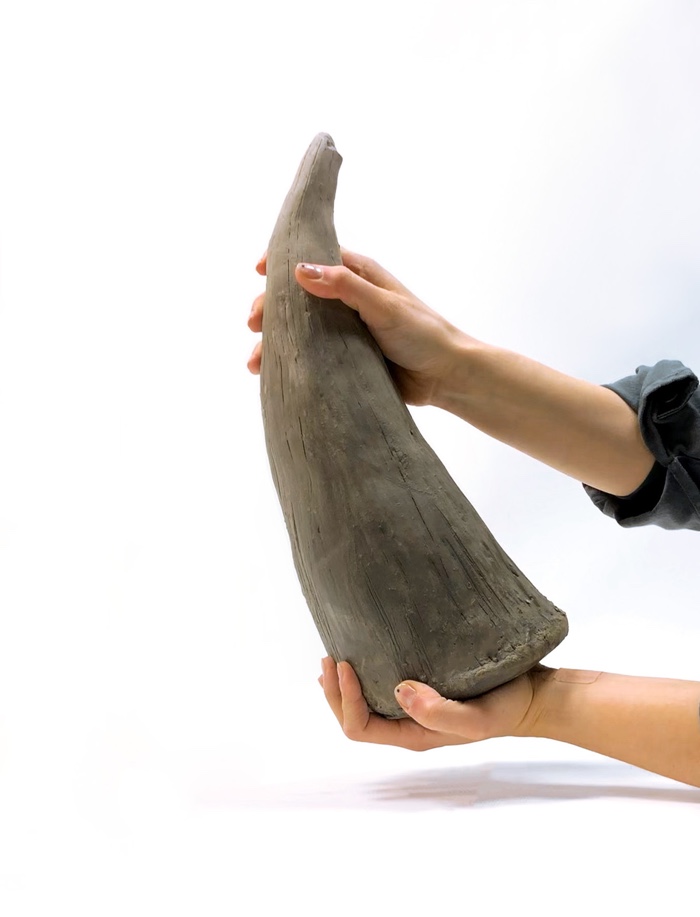
Tina Gorjanc, Harvest, 2020
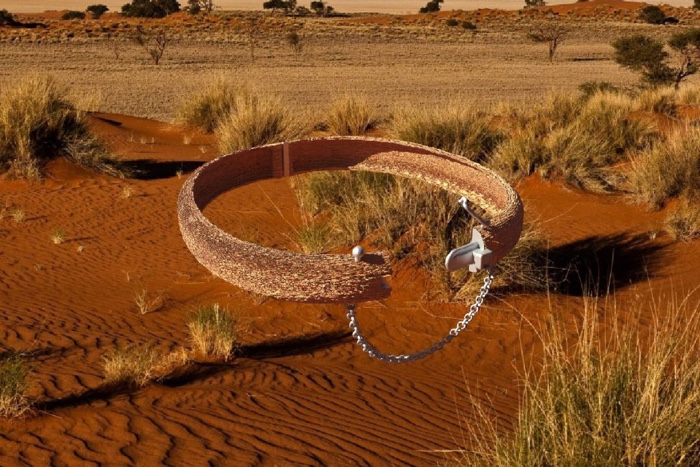
Tina Gorjanc, Harvest, 2020
The black market for rhino horns skyrocketed in the past few years. In the past, the authorities in charge of protecting the species have tried to provide alternatives to the original material but buyers were not interested.
The Harvest project is based on the potential to create and 3D print a keratin-based material that is biologically identical to the substance that makes up the rhino horn.
Inspired by the work carried out by the Pembient company in the process of manufacturing synthetic horns for the commercial market, Harvest adopts a holistic approach. It takes into account one of the key parameters which drive a rhino horn buyer to make the purchase: the clear link between the horn and its provenance.
The project proposes that the differences in lifestyle and environmental conditions of a rhino will be reproduced in the biological and textural composition of the material. A laboratory process can imitate differences between the African white rhino, the great Indian rhinoceros and a Sumatran rhino. The proposed approach would offer the buyer to get involved in the customisation of the horn, providing thus a deeper connection between the material owner and the source. This connection could also potentially shift the negative connotation associated with the terminology used to describe materials and goods made using synthetic biology or biomimicry.
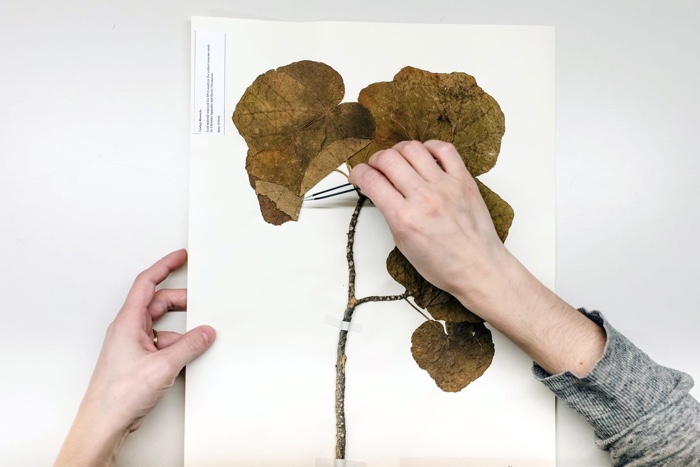
Christina Agapakis of Ginkgo Bioworks taking tissue samples from a dried specimen of Hibiscadelphus wilderianus Rock at the Harvard University Herbarium. Photo via engadget
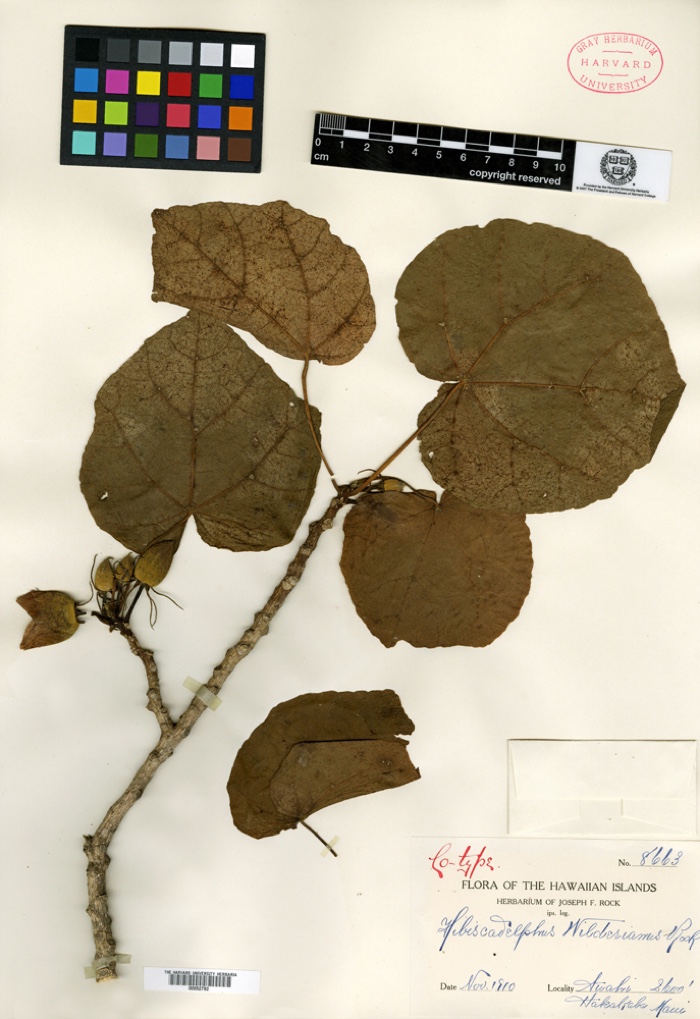
Dried specimen of Hibiscadelphus wilderianus Rock, collected by Gerrit P. Wilder on Maui Island, Hawaii in 1910. Photo: Gray Herbarium of Harvard University.
Reviving the Smell of Extinct Plants
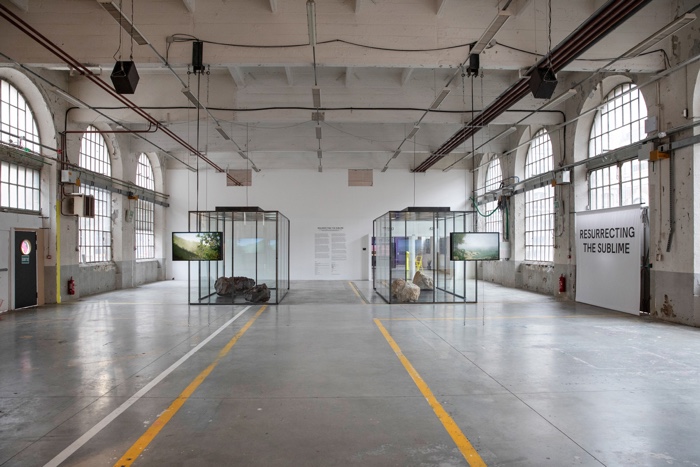
Installation view of Resurrecting the Sublime at Biennale Internationale Design Saint-Étienne, March 2019. Vitrines with smell diffusion, lava and limestone boulders, animations, and ambient soundscape. Left: Hibiscadelphus wilderianus Rock. Right: Orbexilum stipulatum. Photograph: Pierre Grasset.
Could we ever again smell flowers driven to extinction by humans? This is the kind of question that motivates Christina Agapakis, a synthetic biologist and Creative Director at Ginkgo Bioworks, a biotechnology company that designs microbes for industries such as the perfume and the flavour industries.
Agapakis is interested in challenging the duality embedded into synthetic biology: artificial vs natural. What will this split look like in the near future when we do more genetic engineering and mess with nature? How will our idea of nature change? She decided to explore the question through an experiment that saw her collaborate with artists to bring back the smell of an extinct plant using the same technology that Ginkgo Biowork is deploying for the flavour industry.
The Hibiscadelphus wilderianus, or Maui hau kuahiwi in Hawaiian, was an endemic plant growing on ancient lava fields on the southern slopes of Mount Haleakalā, on Maui, Hawaii. In the early 1900s, European settlers arrived on the island, bringing cattle and other invasive which altered drastically the whole ecosystem on the island. The tree on which the Hibiscadelphus was growing went extinct when cattle started grazing on the hillside.
Using tiny amounts of DNA extracted from pressed specimens of flowers stored at Harvard University’s Herbaria, the Ginkgo team used synthetic biology to predict and resynthesize gene sequences that might encode for fragrance-producing enzymes. They couldn’t get a complete gene sequence so the team had to fill in the gaps using sequences of similar plants that are still alive today. Ginkgo’s findings were then sent to smell artist Sissel Tolaas who pulled from her library of smells to assemble a smell of the extinct plant, using identical or comparative smell molecules.
Alexandra Daisy Ginsberg then designed an installation where visitors can smell the perfume released through diffusers and sit on a lava rock that represents the mountain landscape where the Hibiscadelphus wilderianus used to grow. The visitor makes the connection between the landscape and the lost smell fragments of each flower’s smell diffuse and mix, introducing contingency: there is no exact smell. The lost landscape is reduced to its geology and the flower’s smell: the human connects the two.
The work is an artistic and scientific interpretation of what the flower smelled like. It is not an exact reproduction. As Jakob Kudsk Steensen said, we can’t bring these specimens back completely but what we can do is understand the little bits and pieces and bring back these fragments. The ghostliness of the smell brings home that these things are lost forever and that it’s all down to human actions.
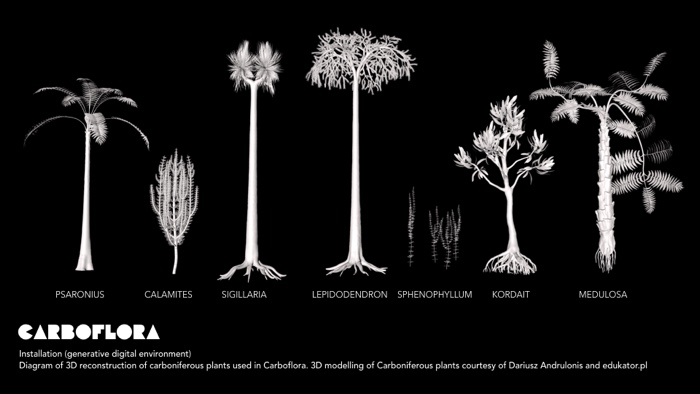
Tanja Vujinović, Carboflora, 2019
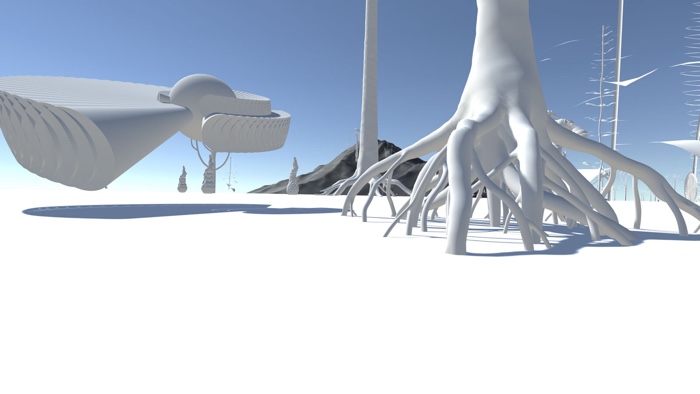
Tanja Vujinović, Carboflora, 2019
Tanja Vujinović‘s Carboflora virtual environment is populated by 3D plants that echo the Earth’s flora from the Carboniferous, a period that saw the formation of many coal beds across the globe. We not only owe much of the energy we consume to that period, we also rely on it to build the synthetic world that chemists and artists use to create new colours, coatings and textures.
Carboflora tracks the quantities of harmful particles in the atmosphere and uses that data to shape the way plants inhabit the virtual system. The work relies on over 10,000 stations located throughout the world that regularly send data about the air quality index and the presence of various pollutants. Upon opening, the application selects the closest physical location and modifies the various properties of plants according to the data received. The changes are barely detectable. Just like pollution in the air: we don’t perceive it until it is so high that we find it difficult to breathe.
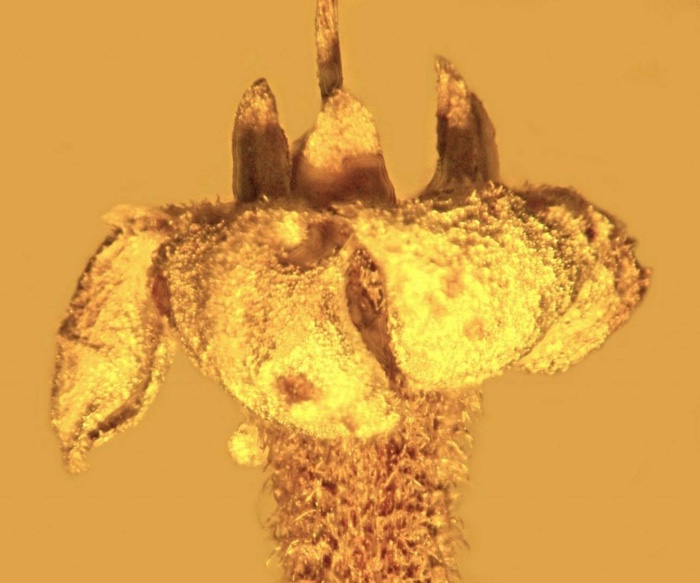
Strychnos electri. A member of the asterid family, found 30 years ago, but only recently classified. Photo: George Poinar
Another plant Tanja Vujinović said that she might include in a future version of her work is a recently discovered species of flower that could be as much as 30 to 45 million years old.
The flower, dubbed Strychnos electri, has been encased in amber for up to 30 million years. The fossil was brought back from an amber mine in the Dominican Republic in 1986 by George Poinar, an Oregon State University entomologist and a scientific advisor on Vujinović’s project.
Previously: The Phylogenetic Atelier: Would your wear clothes made of the skin of de-extinct species?, Share festival. Calling forth the ghosts of technology, Book review: Extinction Studies. Stories of Time, Death, and Generations, Book review: The Story of Life in 10 1/2 Species, How do we make our genetic, biological and digital heritage future-proof?, The Antilibrary: artists’ books and our bizarre future, etc.

